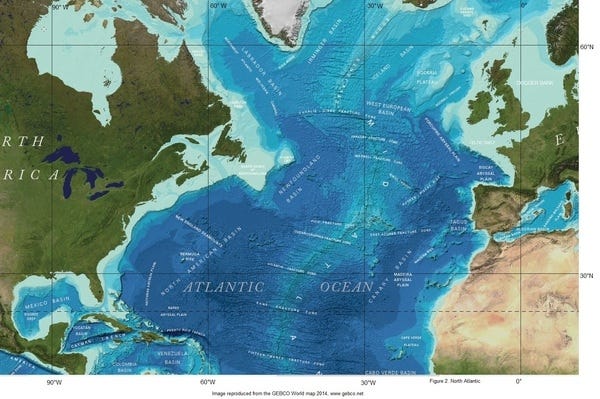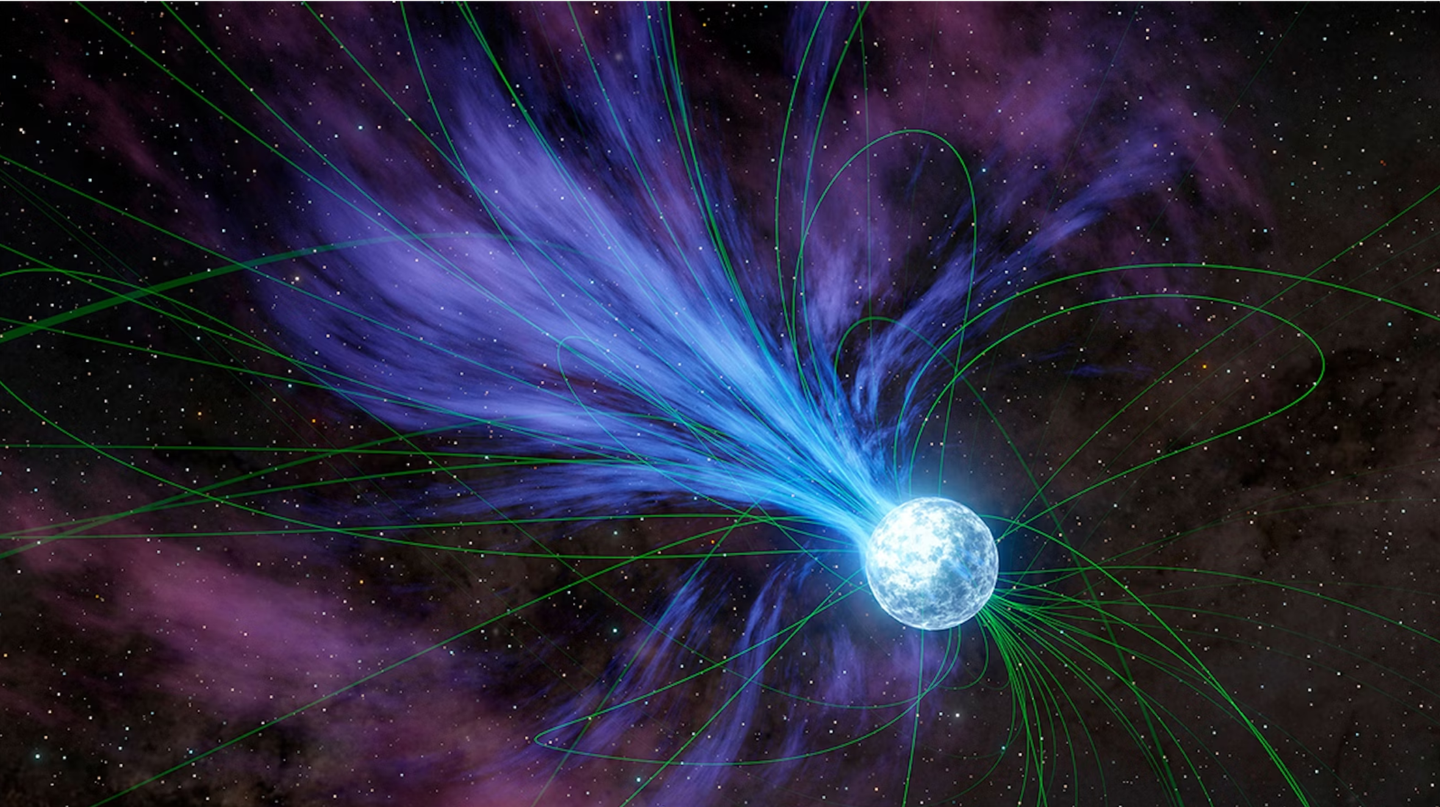The Atlantic Ocean is getting wider every year, study finds
This oceanic expansion tells a much larger tale, unveiling a vast undersea dance that has been largely misinterpreted until recently.

[Aug. 25, 2023: Staff Writer, The Brighter Side of News]
A reservoir of water three times the volume of all the oceans has been discovered deep beneath the Earth’s surface. (CREDIT: Creative Commons)
Every year, an invisible force stretches the Atlantic Ocean, adding a seemingly negligible 1.5 inches to its width. But these tiny increments tell a much larger tale, unveiling a vast undersea dance that has been largely misinterpreted until recently.
In a groundbreaking 2021 study, scientists have cracked open a mystery that has lingered for decades: Why and how does the Atlantic Ocean expand when it doesn't possess the same dense, subducting plates that its Pacific counterpart does?
Mid-Atlantic Ridge: The Ocean's Spine
The heart of this revelation lies beneath the waves, nestled within the massive underwater mountain range known as the Mid-Atlantic Ridge (MAR). This largely submerged series of peaks serves as a divider, separating the North American plate from the Eurasian plate, and the South American plate from the African plate. While the Earth's crust fits snugly like pieces of a jigsaw puzzle, the MAR has always been a significant missing piece to the puzzle of our planet's geology.
Behind this recent study were researchers who made an astonishing discovery. Far beneath the MAR, material originating from the deepest reaches of the Earth was rising to the surface, forcing the tectonic plates apart. This movement has resulted in the continents themselves being steadily pushed away from each other, causing the Atlantic's annual growth.
Related Stories
For context, encasing our planet's core is a solid mantle, 1,800-miles-thick and as hot as the sun's surface. The Earth's crust is fragmented into tectonic plates, which continually interact – some combine, some split apart, while others slide underneath one another.
Such movement can result in volcanic activity, where magma rises from inside the Earth. Alternatively, we can witness seafloor spreading at locations where divergent tectonic plates drift apart, such as the MAR. Additionally, below the crust, convection currents pull hot, softened rock upwards from the mantle.
Interestingly, material that typically surfaces under tectonic boundaries such as the MAR is usually sourced from the mantle quite close to the Earth's surface - a mere 3 miles beneath the crust. Material from the lower mantle, nearest the core, isn't a common find.
However, the study's findings have defied this convention.
A map of the Atlantic Ocean floor. NASA Earth Observatory map by Joshua Stevens, using data from Sandwell, D. et al. (2014). (CREDIT: NASA Earth Observatory map by Joshua Stevens, using data from Sandwell, D. et al. (2014))
Unearthing Secrets with Seismic Waves
Using 39 seismometers that they deposited in the ocean in 2016, the research team monitored geological activity across an impressive 621-mile span. These devices lay dormant for a year, capturing data from global earthquakes. The seismic waves generated from these earthquakes, as they reverberated through the Earth's core, provided the team with a window into the mantle's activities beneath the MAR.
Their observations led to an unprecedented conclusion: magma and rock from as deep as 410 miles beneath the crust are being propelled to the surface at the MAR. It is this upward surge that is pushing the continents apart.
The mid-Atlantic ridge, seen in deep orange, on a NASA Earth Observatory bathymetry map. NASA Earth Observatory maps by Joshua Stevens, using data from Sandwell, D. et al. (2014). (CREDIT: NASA Earth Observatory maps by Joshua Stevens, using data from Sandwell, D. et al. (2014))
"Upwelling from the lower to the upper mantle and all the way up to the surface is typically associated with localized places on Earth, such as Iceland, Hawaii, and Yellowstone, and not with mid-ocean ridges," exclaimed Matthew Aguis, a seismologist at Roma Tre University and a co-author of the study. "This is what makes this result exciting because it was completely unexpected."
Overcoming Nature's Barriers
Often, the journey of material from the lower to the upper mantle is obstructed by a dense rock layer known as the mantle transition zone, positioned between 255 and 410 miles underneath us. However, beneath the MAR, Agius and his colleagues noticed an anomaly. The temperatures in the profoundest segments of the transition zone were higher than anticipated, making the zone anomalously thin. This peculiar characteristic is why materials can ascend to the ocean floor here more effortlessly than elsewhere on our planet.
The part of the Mid-Atlantic Ridge where University of Southampton researchers deployed earthquake-measuring instruments. (CREDIT: University of Southampton)
This discovery has illuminated the answer to a long-standing geological enigma. It is customary for tectonic plates to move due to gravity, drawing the denser portions of the plates inward. Yet, the plates surrounding the Atlantic lack this density. This study proposes that the uprising of materials from the mantle's depths is the actual driving force behind the Atlantic's broadening.
From Past to Future: The Atlantic's Evolution
This phenomenon, as Catherine Rychert, a geophysicist from the University of Southampton and study co-author, highlights, initiated roughly 200 million years ago. And while for now, the rate of expansion might seem fixed, the future could hold different cards.
One of the remote seismometers deployed by University of Southampton scientists in the Atlantic Ocean. (CREDIT: University of Southampton)
"Most probably the rate will remain the same during our lifetime. However, it is likely the rate will change over millions of years because it has varied in the past," Rychert explained.
As the Atlantic Ocean stretches bit by bit every year, it stands as a testament to the dynamic and ever-evolving nature of our planet. This recent study not only deciphers the mechanics behind this expansion but also reminds us of the wonders and mysteries our world still holds. As we look at the vast expanse of the Atlantic, we are also gazing at a phenomenal geological tale unfolding in real-time, echoing across millennia.
For more green news stories check out our Green Impact section at The Brighter Side of News.
Note: Materials provided above by The Brighter Side of News. Content may be edited for style and length.
Like these kind of feel good stories? Get the Brighter Side of News' newsletter.
Joseph Shavit
Head Science News Writer | Communicating Innovation & Discovery
Based in Los Angeles, Joseph Shavit is an accomplished science journalist, head science news writer and co-founder at The Brighter Side of News, where he translates cutting-edge discoveries into compelling stories for a broad audience. With a strong background spanning science, business, product management, media leadership, and entrepreneurship, Joseph brings a unique perspective to science communication. His expertise allows him to uncover the intersection of technological advancements and market potential, shedding light on how groundbreaking research evolves into transformative products and industries.



